Caring for houseplants isn’t just about watering them on time or placing them near a sunny window. One of the most important yet often overlooked factors in plant health is the potting mix. Unlike garden soil, which varies in composition and may not suit indoor plants, a carefully crafted potting mix provides the right balance of air, water retention, and nutrients. If your houseplants are struggling despite proper care, chances are the issue lies beneath the surface—in the soil.
In this detailed guide, we’ll explore why potting mix matters, the essential components of a perfect blend, DIY recipes for different types of plants, and pro tips for maintaining it over time. By the end, you’ll be equipped to mix your own soil like a pro and give your indoor plants the thriving environment they deserve.
Why Potting Mix Matters for Houseplants
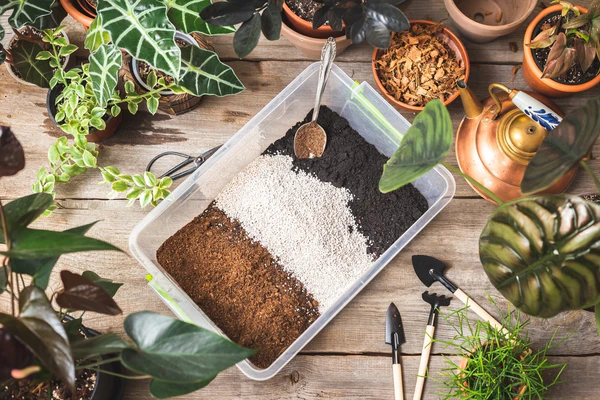
Indoor plants grow in containers, which limits their access to natural soil ecosystems. Garden soil is often too heavy, prone to compaction, and may contain pests or pathogens. A well-made potting mix:
- Provides aeration: Roots need oxygen as much as they need water. A fluffy, well-draining mix prevents suffocation.
- Ensures proper drainage: Prevents root rot by allowing excess water to flow out.
- Retains moisture: Holds just enough water so roots don’t dry out between watering.
- Delivers nutrients: Supplies essential minerals plants need for growth.
- Reduces pests & diseases: Sterile ingredients minimize infestations and fungal issues.
In short, the potting mix serves as the plant’s foundation. Without the right one, even low-maintenance houseplants can decline.
Key Components of a Perfect Potting Mix
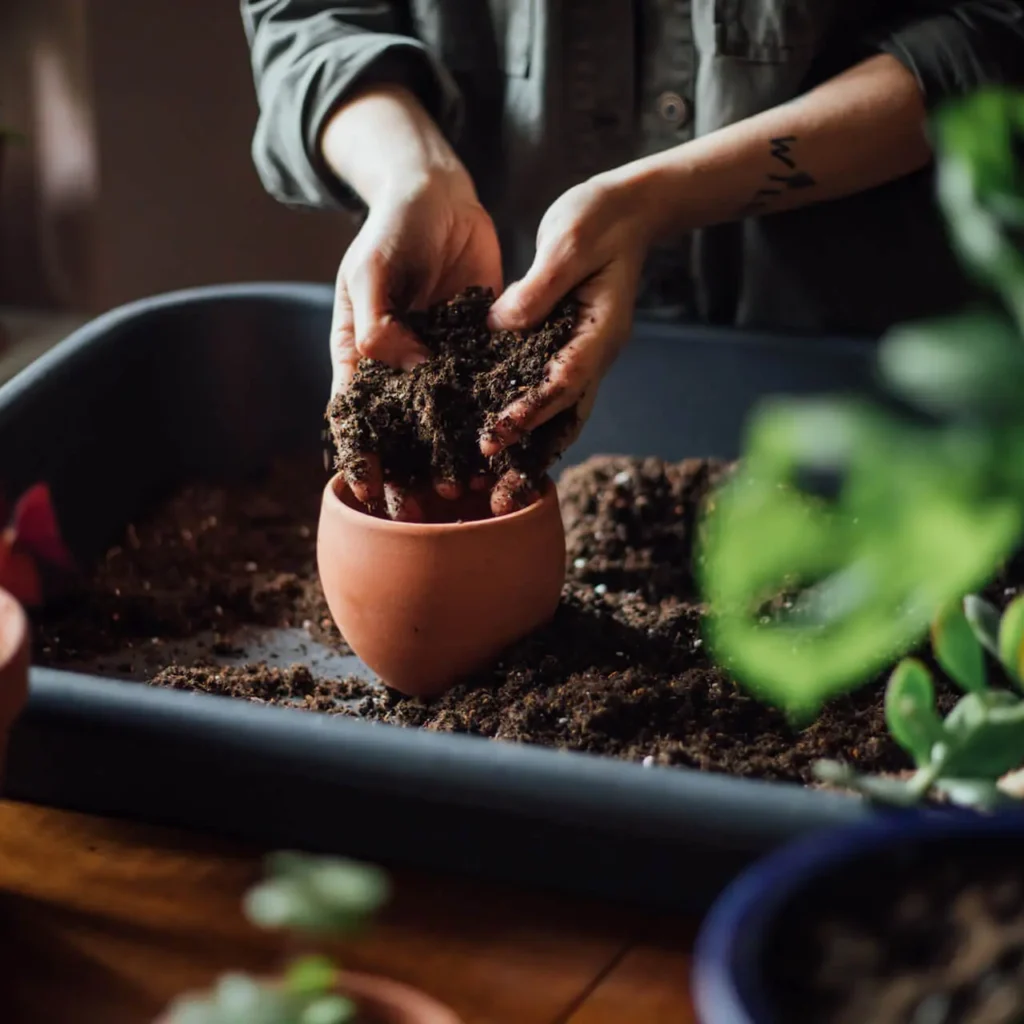
The ideal mix isn’t a single substance but a blend of materials that together balance drainage, aeration, and nutrition. Here are the most common ingredients and their functions:
1. Base Materials
These provide bulk and water retention.
- Coco coir: A sustainable alternative to peat moss, excellent for retaining moisture while staying airy.
- Peat moss: Traditional choice for moisture retention, though less eco-friendly.
- Compost: Adds organic matter and nutrients but should be used sparingly to avoid compaction.
2. Drainage & Aeration Agents
These keep soil light and well-drained.
- Perlite: White, lightweight volcanic glass that improves aeration and prevents soggy soil.
- Pumice: Heavier than perlite, also great for drainage and long-term stability.
- Sand (horticultural): Increases drainage but should be coarse, not fine.
3. Organic Amendments
These boost fertility and support healthy roots.
- Worm castings: Rich in nutrients and beneficial microbes.
- Composted bark: Improves structure, especially for orchids and large houseplants.
- Biochar: Enhances nutrient retention and microbial health.
4. pH Adjusters
Most houseplants prefer slightly acidic to neutral soil (pH 6–7).
- Garden lime: Used to raise pH if too acidic.
- Sulfur: Used to lower pH if too alkaline.
DIY Potting Mix Recipes for Houseplants
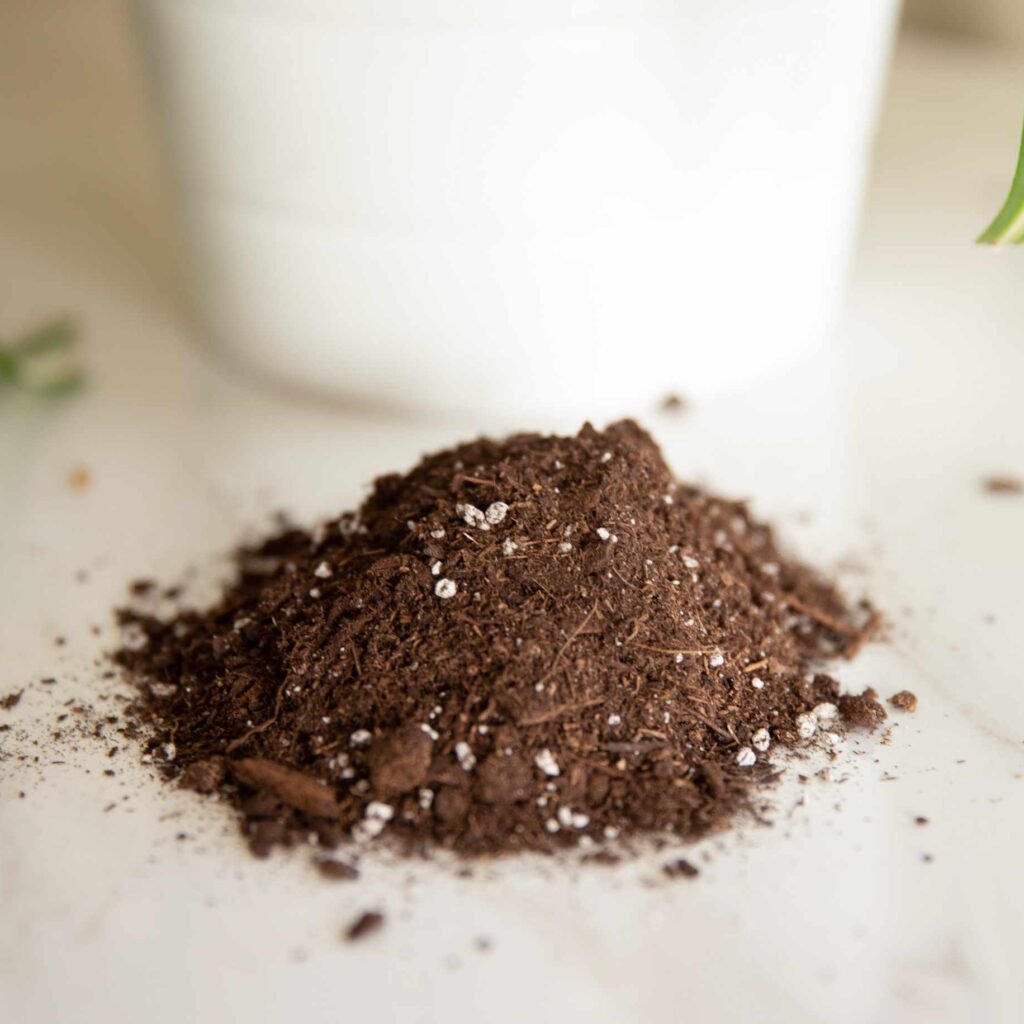
Not all plants thrive in the same type of soil. Tropical foliage plants, succulents, and orchids all require slightly different blends. Here are custom recipes you can try:
1. General All-Purpose Mix
Perfect for most indoor foliage plants like pothos, philodendrons, and spider plants.
- 2 parts coco coir or peat moss
- 1 part perlite
- 1 part compost or worm castings
This mix balances moisture retention with airflow, making it suitable for beginners.
2. Cactus & Succulent Mix
Succulents and cacti need excellent drainage to prevent root rot.
- 2 parts coarse sand or pumice
- 1 part coco coir or peat moss
- 1 part perlite
- Optional: A handful of crushed charcoal to absorb excess moisture
3. Orchid Mix
Orchids are epiphytes, meaning they grow on trees rather than in soil. They need a chunky, airy medium.
- 3 parts orchid bark
- 1 part perlite or pumice
- 1 part charcoal
4. African Violet Mix
These delicate flowering plants prefer rich, airy soil.
- 2 parts peat moss or coco coir
- 1 part vermiculite (for moisture retention)
- 1 part perlite
5. Indoor Edibles Mix (Herbs, Small Veggies)
If you’re growing basil, mint, or chili indoors:
- 2 parts compost
- 1 part coco coir
- 1 part perlite
- A pinch of slow-release organic fertilizer
Tips for Mixing and Storing Potting Soil
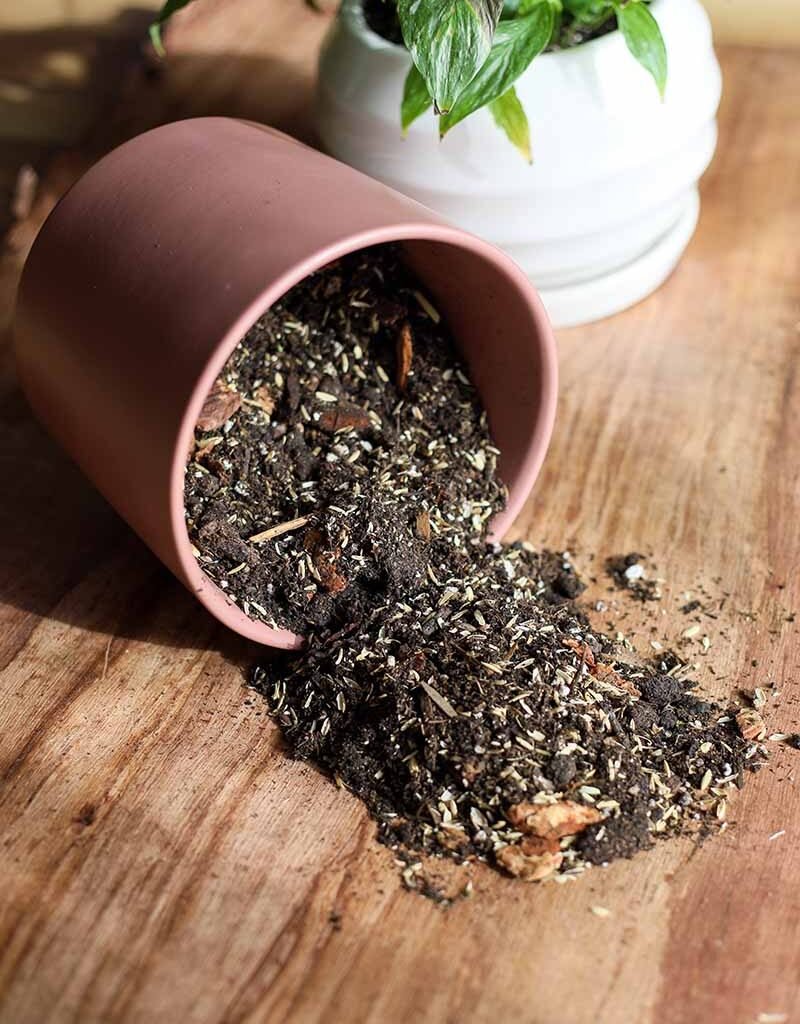
- Sterilize before use: To kill pathogens, you can bake soil ingredients (except perlite) in the oven at 180°F (82°C) for 30 minutes.
- Mix in batches: Use a large bucket or wheelbarrow for even distribution.
- Store properly: Keep extra mix in an airtight container or sealed bag to prevent moisture, pests, and mold.
- Label recipes: If you’re making multiple mixes, label them by plant type to avoid confusion.
Common Mistakes to Avoid
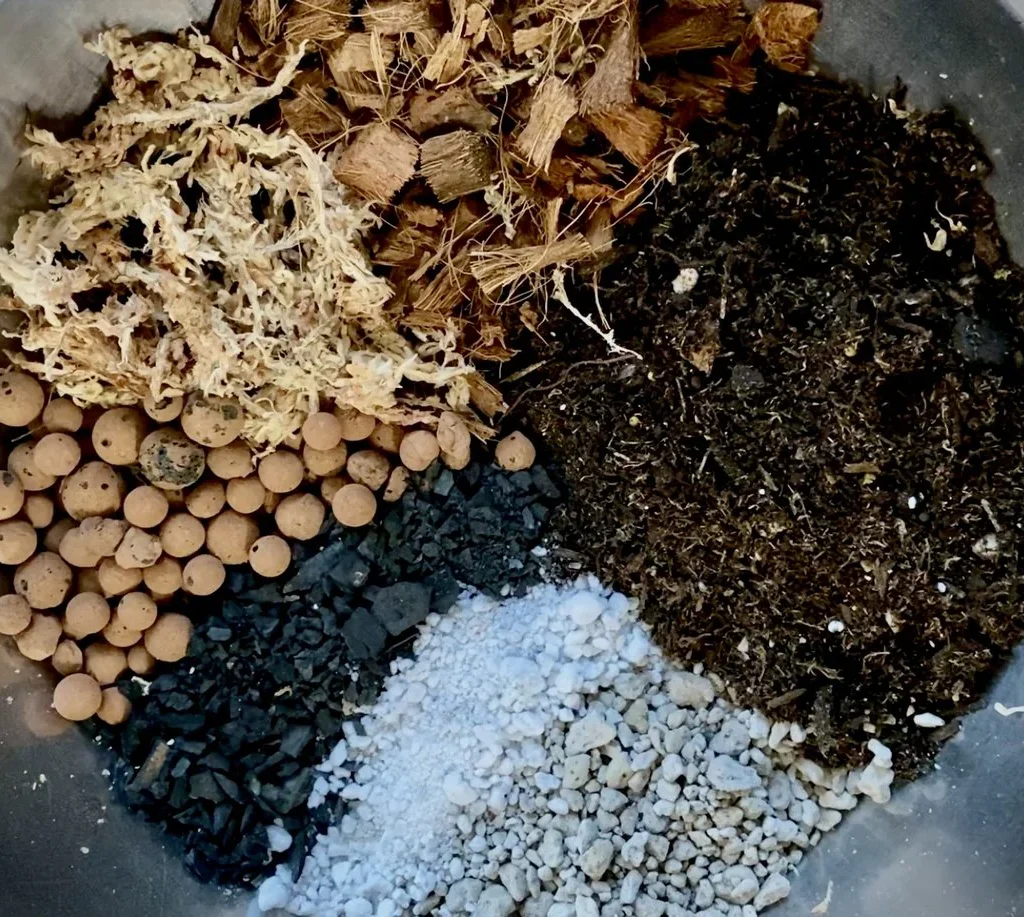
Even with the right ingredients, mistakes in potting soil preparation can harm plants. Watch out for:
- Using garden soil indoors: It compacts easily, drains poorly, and may introduce pests.
- Overloading with compost: Too much can make the mix heavy and waterlogged.
- Skipping drainage holes: Even the best mix won’t help if the pot can’t release water.
- Reusing old soil without refreshing: Over time, nutrients deplete and pests build up. Always refresh with new ingredients.
- Ignoring plant-specific needs: One mix doesn’t fit all—tailor recipes to each plant.
Maintaining the Potting Mix Over Time
Your potting mix won’t last forever. Here’s how to keep it healthy:
- Repot every 1–2 years: Roots outgrow containers, and soil breaks down. Fresh mix restores structure and nutrients.
- Top-dress between repots: Add a thin layer of worm castings or compost to replenish nutrients.
- Flush occasionally: Water heavily once every few months to wash out built-up salts from fertilizers.
- Monitor moisture: Use the finger test—stick your finger an inch into the soil. If dry, it’s time to water.
Eco-Friendly Alternatives to Traditional Ingredients
Sustainability is becoming increasingly important in gardening. Some eco-friendly swaps include:
- Coco coir instead of peat moss (peat extraction damages ecosystems).
- Homemade compost instead of store-bought.
- Rice hulls instead of perlite (biodegradable and renewable).
- Leaf mold for organic matter and microbial life.
These options reduce environmental impact without sacrificing plant health.
Final Thoughts
Creating the perfect potting mix for houseplants is both a science and an art. By understanding your plants’ needs and tailoring the soil blend accordingly, you can dramatically improve their health, growth, and lifespan. Remember that no single recipe fits all—succulents crave sharp drainage, orchids thrive in chunky bark, and tropical plants love moisture-retentive mixes.
Investing time in mixing your own soil not only saves money but also gives you complete control over the environment your plants live in. With the right potting mix beneath them, your houseplants will reward you with lush foliage, vibrant blooms, and long-lasting vitality.
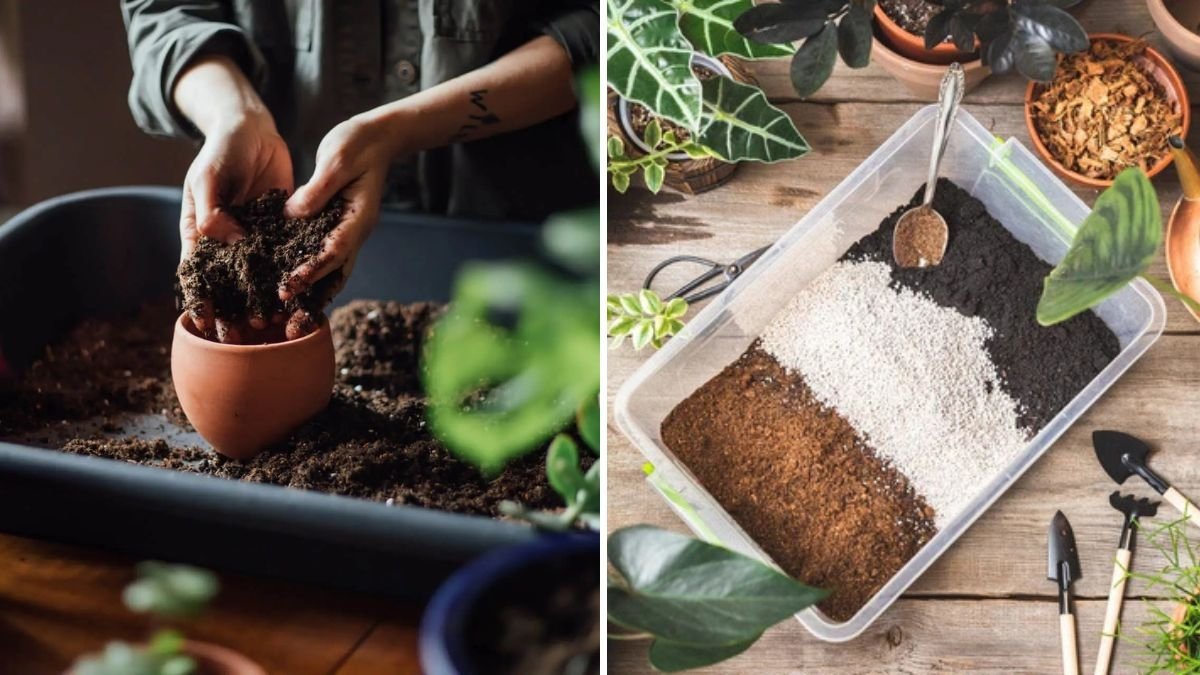




Leave A Comment